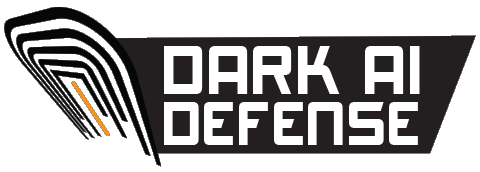The Three Rules for Trustworthy AI: Transparency, Interruptibility, and Do No Harm

In the mid-20th century, science fiction author Isaac Asimov proposed a set of ethical guidelines for intelligent machines—the Three Laws of Robotics. Though fictional, these laws sparked a real-world conversation about the responsibilities we must embed into the technologies we create. Now, as artificial intelligence shifts from futuristic fantasy to everyday infrastructure, a new triad of rules is emerging. Not ones we speculate about, but rules we must rigorously enforce:
1. AI must be transparent.
2. AI must be interruptible.
3. AI must be used to do no harm.
These are no longer philosophical ideals. They are practical imperatives, echoed across industries, policy debates, and ethical frameworks. And increasingly, they form the baseline for whether or not people trust AI at all.
Rule 1: Transparency Is Non-Negotiable
The first and most urgent concern surrounding AI is transparency. As algorithms influence credit decisions, hiring, healthcare, policing, and even warfare, public demand to understand how these decisions are made is growing louder.
Harvard Business Review makes the case plainly: “For AI systems to be trustworthy, they must be designed with explainability, auditability, and transparency at their core” (HBR). Without these qualities, we end up with “black box” models—complex systems whose inner workings even their creators can’t fully explain.
IBM echoes this concern, noting that “Black box models make it difficult to audit, explain or even correct flawed AI behavior, which is dangerous in high-stakes use cases like health care, law enforcement, and financial services” (IBM).
In short: If humans can’t understand it, they shouldn’t be asked to trust it.
Transparency enables accountability. As the Frontiers in Human Dynamics journal puts it, “Transparent systems are more likely to be subject to ethical scrutiny, which makes them better aligned with human values” (Frontiers).
Transparency also fuels democratic oversight. We must reject the idea that AI systems—especially those used in public infrastructure or government—can remain proprietary secrets. If a decision affects our lives, we should have the right to audit the logic behind it.
Rule 2: AI Must Be Interruptible
No intelligent system should ever be allowed to operate beyond human control. That’s the second principle: interruptibility.
In practice, this means AI systems must be designed with built-in interrupt mechanisms—purposeful features that allow human operators to pause, redirect, or disable a system’s operations safely and predictably. These mechanisms are not last resorts; they are essential design components that reinforce human sovereignty over machine autonomy.
Zendesk explains that part of AI transparency involves “understanding how it arrives at a decision and ensuring it can be stopped or redirected when necessary” (Zendesk). This isn’t just good design—it’s a vital layer of ethical governance.
Wired makes a powerful argument in this direction, calling for “automated audits and checkpoints” in high-stakes systems to prevent silent drift or manipulation (Wired).
Equally important is the concept of the ethical circuit breaker—a failsafe modeled after systems in finance and engineering. These circuit breakers are pre-defined thresholds or behaviors that trigger automatic suspension, requiring human review before the system resumes operation. They don’t just allow interruption—they enforce it when outcomes begin to stray beyond ethical or operational bounds.
These tools—interrupt mechanisms and ethical circuit breakers—are already commonplace in aviation and nuclear power. Why would we tolerate less in AI systems that now govern our access to healthcare, employment, and justice?
Interruptibility is the line between automation and abdication. It ensures that humans remain the ultimate decision-makers and prevents runaway systems from harming real people in real time.
Rule 3: Do No Harm — AI Must Align with Human Values
The final and most foundational rule is borrowed from medicine: First, do no harm.
While that may seem obvious, it’s far from guaranteed. AI tools have already been used to generate deepfakes, amplify disinformation, and perpetuate discrimination. The Brookings Institution warns that “opaque AI systems can embed and amplify biases, especially when decision-making cannot be inspected or challenged” (Brookings).
Legal scholars are now pushing for greater enforcement of disparate impact laws, which would require companies to prove their AI systems aren’t disproportionately harming marginalized groups. These efforts align directly with the need to design AI that promotes fairness, justice, and safety.
The TechTarget report on AI transparency emphasizes that “ethical design must include human-centered principles” and that every AI system should be subject to impact assessments just like other critical infrastructure (TechTarget).
AI is not neutral. It reflects the goals and values of those who build it. “Do no harm” is not just about avoiding bad outcomes—it’s about actively ensuring good ones.
The Path Forward: Trust Through Design
If we don’t embed these three rules—transparency, interruptibility, and harm avoidance—into the very architecture of AI systems, trust will erode. And with that erosion comes regulatory backlash, consumer revolt, and, worst of all, preventable harm.
But there is a hopeful trend emerging. Companies are investing in explainable AI frameworks. Governments are drafting transparency laws. Organizations like OpenAI, Anthropic, and Mozilla are publishing transparency reports and making their models more open to scrutiny.
The culture is changing. Slowly, but measurably.
The public is no longer willing to accept black box systems that can’t be interrupted and that may do harm without recourse. They demand AI that is visible, controllable, and aligned with collective values. Anything less is not just irresponsible—it’s untrustworthy by design.
As we stand on the edge of the next digital era, the lesson is clear: AI doesn’t need more capabilities. It needs more conscience.
And that starts with these Three Rules.
Energy Usage Statement:
The creation of this article consumed approximately 0.07 kWh, equivalent to powering a 100-watt light bulb for 42 minutes.

